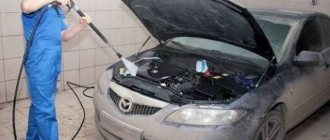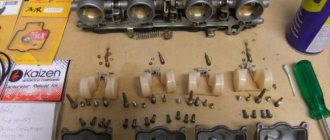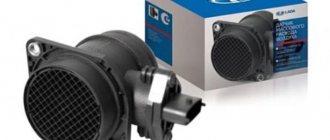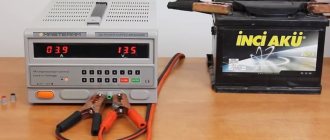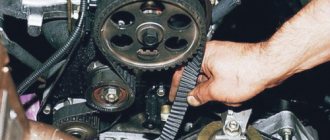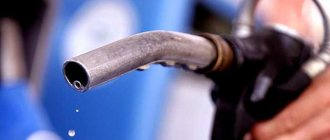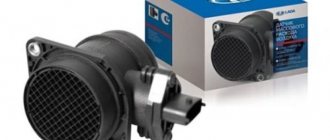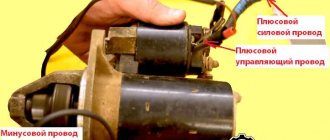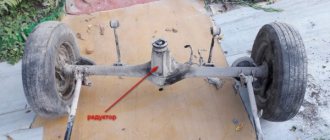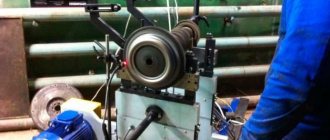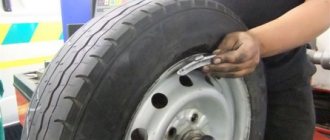Despite the fact that the engine is not a decorative element of the car, it also needs to be washed. In our article we will tell you how to clean the engine from oil and dirt at home. In addition to the aesthetic component (you still periodically open the hood), oil and dirt deposits impair the cooling of the power unit.
And if you are concerned about the question of how to clean the engine of a VAZ 2107, VAZ 2109 and 2110 from oil and dirt, know that conventional washing methods will not work.
Detergents
Every car, like a woman, needs proper care. Most car enthusiasts know how to tidy up the interior of their car. However, not everyone knows how to clean the engine of oil and dirt deposits before repair. To do this, it is not enough to take a container with warm water, a rag, or a brush. Additionally, at a minimum, special detergents are needed. In the case of old and dense deposits, this set of tools is not enough.
To solve this problem, they often resort to installations that supply detergent compositions under high pressure, which in itself is unsafe. The fact is that a strong jet can mechanically damage electrical wiring, gaskets and other elements. The result is engine failure.
To clean the engine housing from heavy contaminants, many experienced drivers use diesel fuel or kerosene. It is better to wash with kerosene - there is less chance of fire. It should be remembered: if you use diesel fuel or kerosene for washing, acrid smoke will begin to emit from the surface of the motor housing. This will happen after the engine warms up. Gasoline is not acceptable as a cleaning agent due to the high risk of fire. In addition, gasoline vapors
Some drivers try to use various household detergents for this purpose, and sometimes they do a good job. But, again, there may be unintended consequences. For example, when using compounds containing chemically active elements - alkalis or acids - parts made of plastic and rubber can be damaged. There is a possibility of oxidation of metal parts.
Why do you need to wash the main components of your car?
For each car, just like for a person, it is customary to follow certain rules of “hygiene”. This is necessary to ensure that the vehicle body is not subject to corrosion and is resistant to external influences. In addition, the powertrain and transmission dissipate heat through more than just coolant. The outer metal surfaces of their housings play an important role in this process. If they become covered with a layer of dirt and oil, thermoregulation may be disrupted.
In addition to the power unit, contamination can affect the radiator, through which the coolant releases its heat into the surrounding atmosphere. Insects and dirt adhering to the cells complicate the heat exchange process.
We should not forget that engine parts are subject to wear and tear during operation. This means that metal particles are getting into the engine oil. Unfortunately, not all of them are removed using an oil filter. Some of the waste settles in the engine crankcase. The oil composition, circulating through the system, picks them up again and distributes them throughout the entire engine lubrication system. When metal “dust” gets on contacting surfaces, it gradually destroys them. The consequences are obvious - a reduction in the life of the motor, disruption of its normal operation, and loss of power. That is why, when changing the oil at home, motorists try to completely drain it from the system. Some craftsmen then manage to remove the most contaminated oil residues from the crankcase using a syringe and tube.
Contamination of the engine compartment and engine can negatively affect the operation of the electronics and ignition system. In addition, if an oil seal has leaked somewhere in the engine, this malfunction is difficult to detect due to the thick layer of dirt and oil deposits. You should also be aware that if the power unit is dirty, the risk of fire increases. Oil deposits may ignite in the event of an exhaust gas leak. An accidental spark can also cause such fatal consequences. All of the above arguments lead to an obvious conclusion: periodically cleaning and rinsing the main components of the car is as important as taking a regular shower for its owner.
Another reason to wash the engine and the entire engine compartment is to sell the car. In this case, pre-sale preparation is an integral attribute that allows the buyer to evaluate all the advantages of the proposed vehicle.
How to clean an engine from oil and dirt with your own hands
Diesel fuel, gasoline and kerosene are used by many motorists, but this choice is not very good - there is a danger of fire or smoke in the future. Various compounds can help you wash your car engine at home.
Experienced professionals emphasize that for home cleaning of engine oil, you should prefer universal compounds, especially if cleaning is done regularly and few oil stains accumulate. In advanced cases, the power unit has to be washed with special means.
Aerosols are the most suitable for removing oil from an engine in the garage - this product is well distributed and reaches even hard-to-reach places.
conclusions
The car engine needs to be washed, just like all its other structural elements. At the same time, when washing it, it is necessary to follow certain rules in order not to damage the power unit and the components of the engine compartment. The frequency of washing the engine is once a month and should be adhered to so that the engine not only looks neat, but is also in good working order. With a clean engine, you can see traces of fuel and oil leaks in advance, and eliminate the faults that caused them in a timely manner.
Now about how to wash the engine?
- The engine is washed only when the engine is cold; it is allowed to be a little warm, but in no case hot.
- Turn off the power to the car by disconnecting the battery terminals.
- Electronics and water are irreconcilable enemies, remember this! Using plastic film and tape, carefully insulate components with electronics, as well as those that do not like water (ECU, fuse box, generator, starter, battery, etc.).
- Once everything is prepared, dilute the car shampoo until it forms a lather, then apply it to the engine. After this, you need to wait until the active substances do their job, that is, eat away all the dirt and other “evil spirits”. You need to wait as long as indicated in the instructions for use of a particular shampoo.
- While you wait, take a brush with a handle and apply detergent to hard-to-reach areas.
- After this, you can begin to wash off the foam and everything that it washed off.
- Carefully remove the protective plastic film from the insulation.
- If the household has an air compressor, blow/dry the cleaned engine, paying special attention to spark plug wells and electronic components.
- Start the engine and warm it up to operating temperature, make sure that the engine runs smoothly without interruptions.
That's all. This simple, but very useful and important procedure will allow you to save at least 300-500 rubles on washing, as well as keep your car’s engine in good and tidy condition.
Flushing the lubrication system
It's not just the engine casing and its surrounding parts that need cleaning. Systems such as cooling and lubrication also require periodic cleaning. This procedure must be carried out when the car owner decides to fill in new engine oil from another manufacturer. Or the manufacturer is the same, but the viscosity and quality indicators are different. In addition, over time, oxidation products, wear of parts, and carbon deposits still remain in the oil system. There are two ways to flush the lubrication system.
- The car is installed on a pit or overpass. After this, the old engine oil is drained through the drain plug. The so-called flushing composition is poured into the neck. The engine should run with it for some time, specified in the flushing oil manufacturer's instructions. After which the flushing is also removed from the system.
- Old grease is not removed. Special detergent additives are poured into it to clean the power plant. After this, the motor usually runs for several minutes. A more precise time is indicated in the instructions for the additive. After stopping, the old oil is removed from the engine.
It is worth noting that the cleaning method using flushing oil is softer and more gentle on the power unit. The second is more rigid due to the strong aggressiveness of most additives. In any case, after washing, you should immediately fill in a new lubricant and replace the oil filter.
It is not recommended to get carried away with flushing the lubrication system unless absolutely necessary. It is better to use the same brand of oil fluid, and replace it more often - not after 15 thousand kilometers, as the regulations say, but after 7-8 thousand.
How to properly wash the engine and engine compartment
Before you start cleaning the motor and its surrounding components from dust, oil and dirt, you need to follow a few simple rules, and the cleaning and washing itself must be done in a certain sequence.
- First, you need to prepare several available materials: rubber gloves, polyethylene and foil, adhesive tape or electrical tape, a rag, a brush (not made of metal), a sponge. Detergent is also required to be purchased.
- It is better to clean the engine in warm, dry weather, so excess moisture will evaporate faster after flushing from under the hood.
- Before washing the power unit, you need to let it cool to an acceptable temperature - from 50 to 60°C. If the engine was cold, it means you need to warm it up to the same temperature.
- You need to remove the terminals from the battery, after which it is advisable to remove it from under the hood.
- Parts such as the distributor, ignition coil, air filter, terminals and other electrical connection components, depending on the model and design of the engine, must be protected from moisture. This is done using polyethylene, foil, tape or tape.
- It is necessary to moisten all dirty surfaces with a small amount of water. After this, a cleaning composition is applied. If it is an aerosol, it is simply sprayed onto all surfaces that need cleaning. If it is a prepared solution, you can spray it with a spray bottle or apply it with a sponge. In hard-to-reach places, it is better to use a small brush - for example, a toothbrush.
- After this, you need to wait some time until the cleaning agent comes into contact with the dirt. The time interval is usually indicated in the instructions for use of the detergent composition.
- Finally, you need to wash the entire engine compartment where the cleaning composition was applied. This must be done with extreme caution, preventing water from getting into the electrical connections and other connections described above, even if they are protected with polyethylene or foil. A hose with a good stream of water is often used for this procedure. In order to generate more pressure, the end of the hose can be pinched with your fingers.
- After rinsing, the quality of cleaning is checked. If there is a little dirt left somewhere, the procedure can be repeated again.
Well, your favorite “iron horse” has become clean and tidy. True, you cannot start the engine and drive the car. The engine compartment needs to dry out. To do this, you need to lift the hood and dry the surfaces of the parts underneath with paper towels. Particular care must be taken to eliminate moisture in the area of elements protected by polyethylene or foil. Only after this can you remove the protective equipment.
After initial drying, the moisture will evaporate for at least another 12 hours. Therefore, if possible, it is better to leave the car in the garage with the hood up until it dries. If water gets on the contacts or terminals, causing them to oxidize, you can clean them with an aqueous solution of baking soda in a 1:1 ratio.
After washing the engine the car does not start, what should I do?
If, after washing the car engine, the car does not start, then it is recommended to carefully examine all the niches where water may accumulate for the presence of moisture. It is recommended to remove moisture from these niches using a rag.
Experienced mechanics advise removing the spark plugs and drying them just in case. Because if water has flowed in there, then they can become a problem because they do not provide the spark needed for ignition.
It is recommended to thoroughly dry all battery terminals. To do this, take a cloth and wipe the positive and negative terminals. High humidity results in no contact between the terminal and the battery. Because of this, the engine does not start.
Experienced mechanics advise drying the engine thoroughly immediately after washing. Otherwise, moisture ingress may cause a short circuit. A short circuit will entail a major overhaul of the engine. For example, you will need to replace burnt ignition coils and armored wires due to breakdown of its insulation.
Therefore, experienced mechanics advise being careful when washing the engine. Sometimes it is better to have your car washed than to wash it yourself.
The most effective cleaning method
It is best to adhere to the following engine washing algorithm. Before starting, you need to insulate with polyethylene and tape all components vulnerable to water: electrical connectors, generator, air filter air intake, relays, etc. The battery needs to be removed. For greater efficiency, the engine should be warmed up at idle, but it should not be hot.
A special foam cleaner removes dirt best. It must be applied to all surfaces and wait a few minutes for it to be absorbed. Active, stable foam very effectively removes the oldest and most burnt stains without harming plastic and rubber. For hard-to-reach places and the heaviest dirt, you should use a stiff brush. Then we wash off the detergent with a weak stream of water, wipe the accessible areas with a clean rag and remove all the applied insulation.
Cleaning the battery
The battery is treated with a mixture of water and baking soda in certain proportions. This procedure will perfectly protect the terminals from corrosion, improve engine starting and slightly increase battery life.
Cleaning the cooling system
During operation, scale and salt deposits appear in the cooling system channels. This process is inevitable, since antifreeze constantly experiences stress associated with sudden temperature changes. Therefore, periodic flushing of the cooling system is a necessary procedure. You can do the job like this:
- spent antifreeze is drained from the system;
- a mixture of distilled water and a small amount of vinegar is prepared in the required quantity;
- after this, the engine runs for a certain time, and then the flushing solution is drained;
- Instead, new antifreeze is poured in.
For better cleaning of cooling channels, it is better to use special products. There are a sufficient number of them on sale - both domestic and foreign-made. Each one comes with instructions for use.
Effective products for cleaning the power unit and engine compartment
The list contains preparations that are easy to use and with which it is easy to achieve the purity of the components:
Pestone Heavy Duty
Pestone Heavy Duty is an aerosol cleaner that breaks down dirt and oil in ten minutes, after which it is enough to rinse off with water. When it comes into contact with the surface to be cleaned, the product forms foam. The product helps to cope with oil deposits and dirt, but it cannot remove old deposits; it is a good product for regular engine care.
STP Heavy Duty Engine Degreaser
STP is an aerosol suitable for passenger cars, SUVs and minibuses. The exposure time is about a quarter of an hour and removes even complex dirt and deposits.
Liqui Moly Motorraum-Reiniger
Liquid Moli is a spray that lasts from fifteen to twenty minutes. Wash off with running water. Suitable for combating dust, oil stains, and reagents that get under the hood while driving. Effective even against old deposits.
